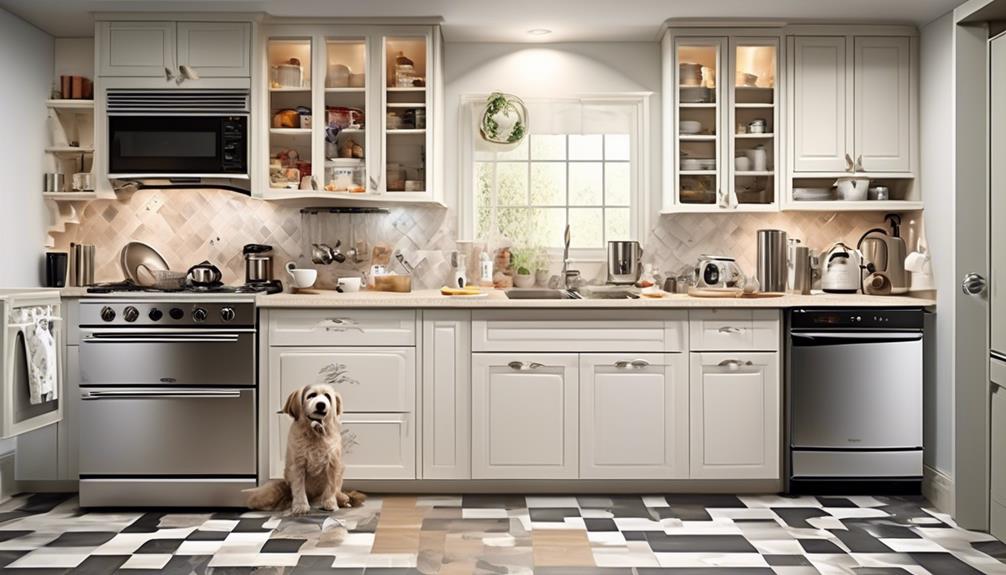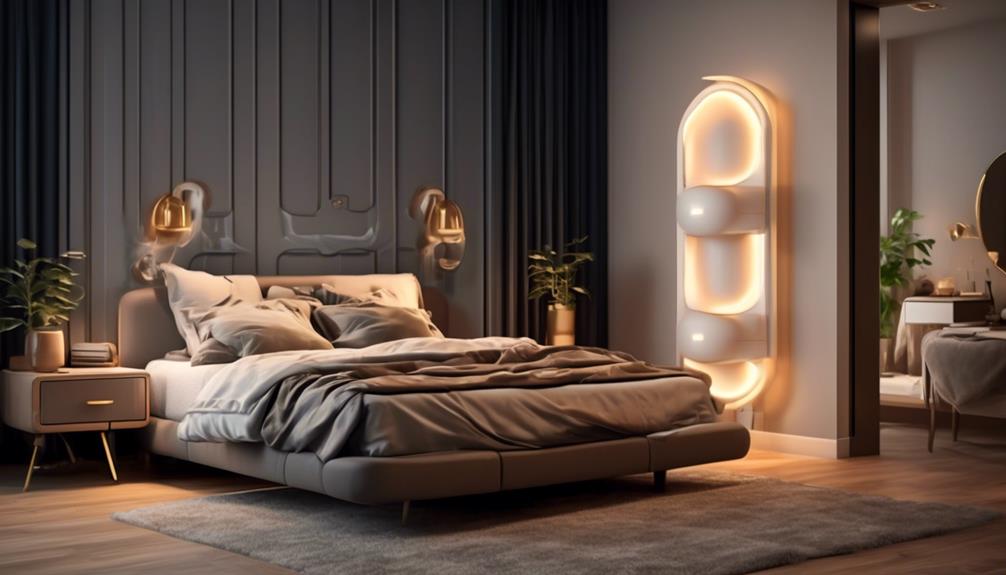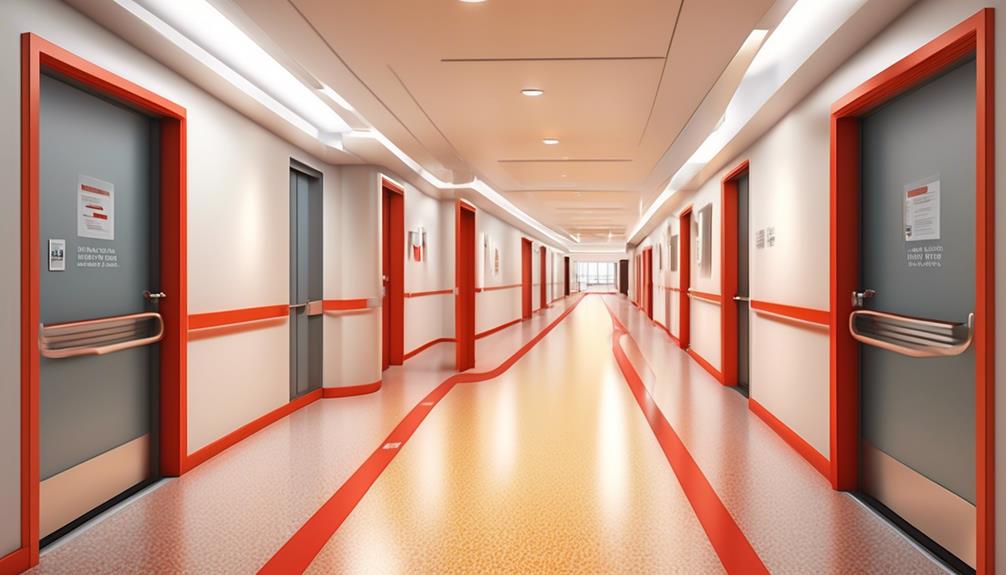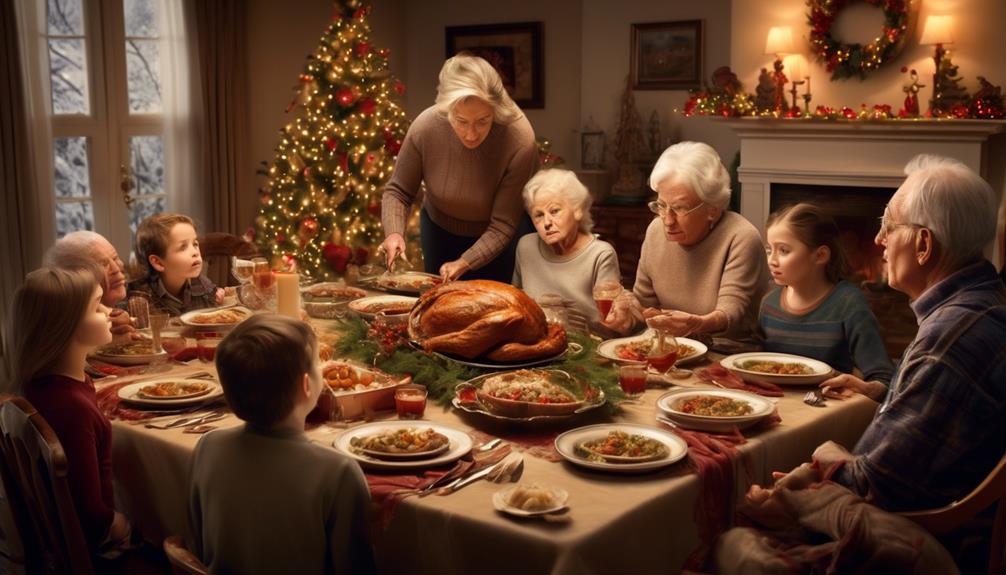Navigating the intricate terrain of home safety for elderly individuals with dementia can be like navigating a maze full of hidden risks.
As we explore the intricate dance between creating a nurturing environment and safeguarding against potential risks, it becomes evident that small adjustments can make a significant impact on the well-being of our loved ones.
From ensuring secure handrails on stairways to implementing kitchen safety measures, each step taken is a move towards fostering a secure haven for those navigating the challenges of dementia.
Join us as we uncover essential strategies to create a home environment that promotes safety and independence for seniors grappling with this condition.
Key Takeaways
- Prioritize creating a secure and hazard-free home environment for seniors with dementia.
- Install safety measures like grab bars, non-slip mats, and proper lighting.
- Remove potential hazards, such as sharp objects, loose rugs, and unsecured electrical cords.
- Ensure clear pathways, clutter-free living areas, and locked bedroom doors for added security.
Home Environment Modifications
Assessing and enhancing the home environment through thoughtful modifications is essential to promoting safety and comfort for seniors with dementia. Caregivers must prioritize creating a secure space by following a comprehensive Home Safety Checklist. To prevent accidents, it's crucial to remove potential hazards like loose rugs and unsecured electrical cords.
Making simple adjustments, such as installing grab bars in bathrooms and ensuring proper lighting, can significantly reduce the risk of falls. By carefully evaluating the home environment, we can keep our loved ones with Alzheimer's safe and supported. Additionally, using contrasting colors to distinguish different areas aids those with visual impairments in navigating the space with ease.
Regularly updating safety measures as the disease progresses is vital to maintaining a secure home. Through these modifications, we can make the home environment not only safer but also more conducive to the well-being of seniors with dementia.
Kitchen Safety Measures

To ensure a secure kitchen environment for seniors with dementia, we must implement essential safety measures that build on creating a safe home environment. When caring for a loved one living with Alzheimer's disease, it's crucial to prioritize their safety in the kitchen.
Here are some key safety measures to consider:
- Remove or lock away sharp objects and hazardous materials: Keep knives, scissors, cleaning supplies, and other potentially dangerous items out of reach to prevent accidents.
- Install safety knobs on the stove: Prevent accidental burns or fires by using stove knob covers to limit access to the stove.
- Use non-slip mats: Place non-slip mats in front of the sink and stove to reduce the risk of falls, especially in areas where water or spills may occur.
Bathroom Hazard Prevention
When creating a safe bathroom environment for seniors with dementia, it's essential to address potential hazards proactively and with care.
Installing nonskid strips or mats in the tub and shower can help prevent slipping accidents. Placing grab bars near the toilet and in the shower provides support for stability. Removing locks from bathroom doors ensures easy access in case of emergencies.
Utilizing washable bathroom carpeting and a foam rubber faucet cover adds an extra layer of safety. It's crucial to evaluate the bathroom environment for any potential hazards, such as slippery surfaces or sharp corners.
By having grab bars, non-slip mats, and emergency call buttons in place, you can be prepared for any situation. Installing locks on cabinets and drawers can prevent access to hazardous items, and keeping the walkways well lit reduces the risk of falls.
Removing tripping hazards like rugs or clutter further enhances bathroom safety for your loved one with a dementia diagnosis.
Bedroom Security Tips

Ensuring a safe and secure bedroom environment for seniors with dementia involves implementing strategic measures to prevent accidents and promote comfort. When it comes to bedroom security tips, it's crucial to address specific needs to create a safe space for our elderly loved ones with Alzheimer's.
Here are essential bedroom safety measures to consider:
- Install locks on bedroom doors to prevent wandering and ensure safety.
- Keep walkways in the bedroom clear of tripping hazards, such as rugs or clutter.
- Ensure the bedroom is well-lit to prevent falls and promote visibility.
Living Room Safety Strategies
In our experience, creating a safe living room environment for seniors with dementia involves thoughtful consideration of various safety strategies. When living with dementia, safety concerns in the home become even more critical.
To help caregivers ensure a safe home for their loved ones with Alzheimer's or other forms of dementia, it's essential to address safety hazards in the living room.
To prevent falls, make sure the living room is clutter-free and well-lit. Arrange furniture in a way that allows for clear pathways and removes any tripping hazards like loose rugs or cords. Consider installing handrails or grab bars near sofas or chairs to assist with standing and sitting.
Additionally, secure loose electrical cords and ensure that outlets aren't overloaded. Cover sharp corners of furniture with padding to prevent injuries in case of accidental bumps.
Frequently Asked Questions
How Do You Make a House Safe for Someone With Dementia?
We ensure a safe environment for individuals with dementia by implementing various measures.
We install safety devices, such as alarms and locks, and remove tripping hazards.
Regular assessments help us update safety measures as needed.
Providing structured routines and activities reduces anxiety.
Emergency preparedness is key, with contacts readily available.
Our attention to detail and experience guide us in creating a secure living space for those with dementia.
What Is the Most Common Cause of Death in Dementia Patients?
The most common cause of death in dementia patients is complications from infections, like pneumonia or urinary tract infections. Dementia weakens the immune system, increasing susceptibility to these illnesses.
Additionally, heart disease and stroke are other common causes of death in dementia patients. Regular medical check-ups and preventive measures can help reduce the risk of infections and other health complications.
Early detection and management of underlying health conditions are crucial for improving overall health and well-being.
What Are Some Home Safety Measures That Can Be Taken for Clients With Dementia?
We prioritize safety for all clients, especially those with dementia.
It's essential to create a secure environment by installing safety devices like grab bars and handrails.
We also make sure to remove tripping hazards and keep walkways well-lit to prevent accidents.
Implementing childproof latches and locks on doors and windows helps us ensure their safety.
Regularly checking and maintaining safety equipment like smoke detectors is crucial for their well-being.
What Is the Number One Trigger for Dementia Behavior?
The number one trigger for dementia behavior is environmental stressors. These stressors can include loud noises, crowded spaces, changes in routine, and unfamiliar surroundings.
Understanding and managing these triggers are crucial to reducing challenging behaviors and improving overall well-being. Creating a calm and predictable environment is essential to minimize triggers and promote a sense of security for individuals with dementia.
Consulting with healthcare professionals or dementia specialists can provide guidance on identifying and managing these triggers effectively.
Conclusion
As we wrap up our discussion on home safety for seniors with dementia, remember that creating a safe environment is like building a fortress of protection around our loved ones.
By making simple modifications and implementing safety measures, we can help them navigate their surroundings with confidence and ease.
Let's continue to be diligent in ensuring their safety and well-being as they navigate this challenging journey.









